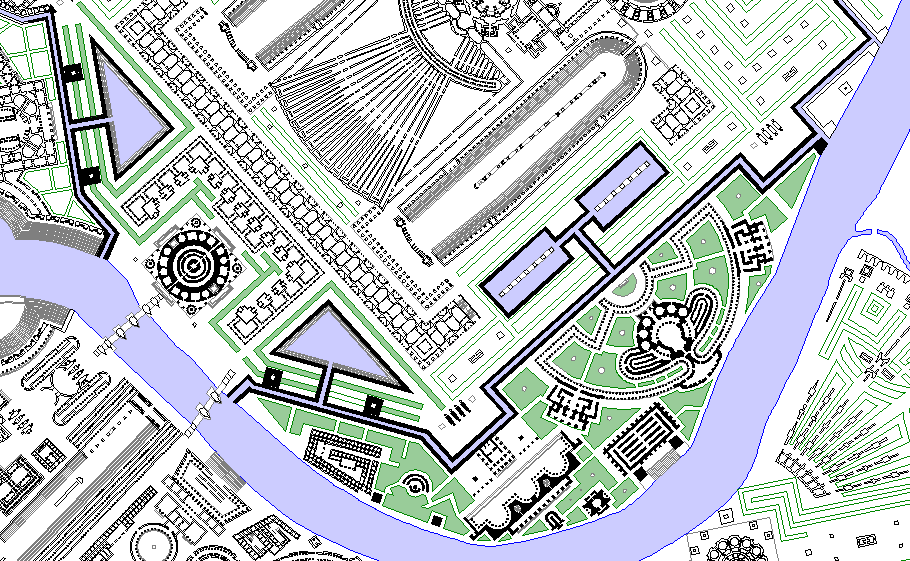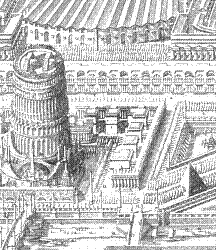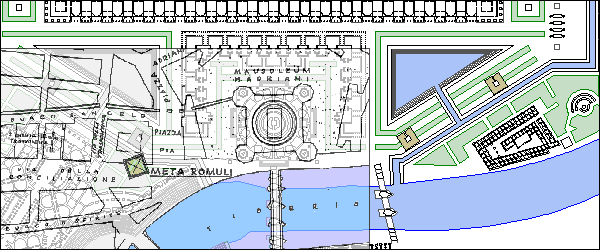Encyclopedia Ichnographica | Horti Domitiae | 1/1 |
|
The north boundary of the horti Agrippinae appears to have been the via Cornelia, and from this street east extended the horti Domitiae, which belonged to Domitia, the sister of Nero's father. In 59 A.D. Nero caused her to be assassinated, and seizing the gardens, united them to the horti Agrippinae. In building the palazzo di Giustizia, the west boundary of these gardens was found to coincide with the axis of the new structure, and on the west of this line many monumental remains of opus reticulatum and marble were discovered.
(Platner)
|
Meta Romuli
Piranesi designates two pairs of pyramids along the canals and pools (stagnum) situated either side of the Sepulchum Hadriani. No specific names are applied to these pyramids, and the word pyramis is their only label. Together with Hadrian's Tomb, they establish a grand symmetrical layout that extends throughout the Horti Domitiae and includes the Bustum Hadriani. As a group, the four pyramids have no historical or archeological validity, however, the position of the pyramid closest to Hardian's Tomb, on the side facing St. Peter's, is remarkably close to the verified position of the Meta Romuli. This correspondence of placement between the real pyramid and Piranesi's imaginary one could be an uncanny coincidence, or it could be an example of a methodology Piranesi used to aid in piecing together his overall Campo Marzio design. If the latter is true, then Piranesi willfully manipulated a historical artifact to conform to his preferred design scheme. Moreover, Piranesi's exact mirroring of the Meta Romuli suggests careful maneuvering rather than whimsical play. The Ichnographia pyramid is in essence an inversion of the Meta Romuli.
|
Quondam © 2016.04.04 |


 Overlay of the Ichnographia and the site plan of the Meta Romuli.
Overlay of the Ichnographia and the site plan of the Meta Romuli.